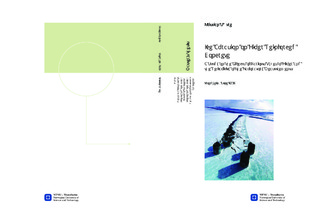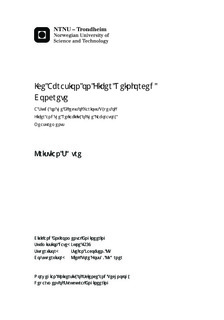| dc.description.abstract | The purpose of this study has been to compare how fiber reinforced concretes, using different amounts and types of fiber, behave compared to standard offshore concretes without fiber in regard to ice abrasion. The effect of fiber addition on the freeze-thaw resistance has also been studied. Due to various observations during testing, a large part of this study has gradually come to deal with the accuracy and the reliability of the measurement equipment and methods used during these ice abrasion tests.A literature review has been done on the effect of various parameters on the ice abrasion of concrete. Previous studies have shown the beneficial effect of the use of fiber reinforcement on both the abrasion resistance and freeze-thaw resistance of concrete. Studies have also shown that a decreased abrasion rate can be expected with an increase in flexural and compressive strength, and that the surface topography has an effect on the abrasion rate. Few studies, though, have specifically looked into the ice abrasion resistance of fiber reinforced concrete. Ice abrasion tests have been performed at the NTNU ice abrasion laboratory on five different concrete mixes. These mixes include a B70 reference concrete and concretes with the following fiber additions: 0.5% steel fiber, 1.5% steel fiber, 1.5% polypropylene fiber and 1.5% basalt fiber. Freeze-thaw testing, according to ASTM C666 Procedure A, and air void analysis using fresh concrete, the PF-test and image analysis, have also been performed on the different concrete mixes.It has been observed that all of the fiber additions, except for the 1.5% steel addition, have improved the ice abrasion resistance of the concrete. The ranking of these different fiber concretes in regard to their ice abrasion resistance has been found to be difficult, due to the fact that the abrasion rates are all lower than the average deviation of the measurements. Therefore, the mixes showing a better ice abrasion resistance than the others may just as well be due to the inaccuracy of the measurements than to the actual ice abrasion resistant properties of the material.However, the abrasion rates observed in this study are generally very low. The maximum abrasion rate found is 0.011 mm/km, and the abrasion rates here are on average 11 times lower than the rates found in similar tests done by (Kirkhaug 2013). Correlations showing the positive effect on ice abrasion resistance with increasing Surface Average Roughness and Root Mean Square Roughness parameters have also been observed. All concrete mixes failed the freeze-thaw testing requirements and the addition of fiber reinforcement has not given the expected improvement in freeze-thaw durability. Through air void analysis, it has been shown that the reason for this low concrete quality, in regard to freeze-thaw resistance, has been due to a poor air void content and structure in all of the mixes.The accuracy of both the abrasion and roughness values has been questioned, and the average deviation of the measurements has been found to be large compared to the abrasion rates. This is due to, among other factors, the large distances between measuring points, systematical irregularities on the specimen surfaces, and an inaccuracy in the measuring equipment and procedures used. This doubt on the reliability of these results has been backed up by the poor correlation found between abrasion rates on specimens of the same product type and tested under the same conditions. A more thorough discussion is recommended on the accuracy and reliability of the measuring equipment and procedures at the NTNU ice abrasion laboratory when testing materials with very low ice abrasion, such as those tested here. Also, further research on the effect of different fiber types and dosages on concrete ice abrasion, and the correlation between surface roughness parameters and the abrasion rate, is recommended. | nb_NO |

